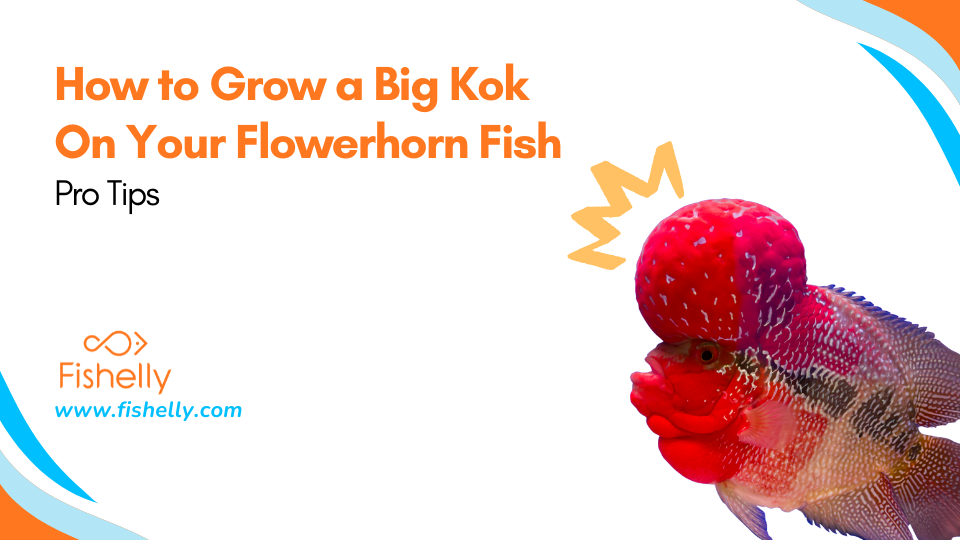How to Grow a Big Kok on Your Flowerhorn Fish | Expert Guide
Discover how to grow a massive kok on your Flowerhorn fish with tips on genetics, diet, tank care, and interaction. Simple, proven steps for stunning results.
Table of Contents
- It All Starts with Genetics
- High-Protein Diet = Bigger Hump
- Give Them a Spacious and Clean Tank
- Perfect Water Parameters Matter
- Deworming Helps with Growth
- Interact With Your Flowerhorn
- Should You Use Kok Boosters or Supplements?
- Stress-Free Environment = Better Growth
- Proper Lighting Enhances Both Kok and Color
- Track Growth Progress
- Seasonal Adjustments
- Emergency Response Plan
- Bonus Tips
- Faq
- Conclusion
The Flowerhorn fish is known for its striking appearance, especially its large head hump, called a kok. This prominent, fleshy growth sets it apart from other ornamental fish and is often seen as a symbol of beauty and pride among fish keepers—the bigger the hump, the better. However, a massive kok doesn't appear overnight. It takes the right mix of strong genetics, a nutritious diet, proper tank conditions, consistent care, and a lot of love to help your Flowerhorn develop a healthy and impressive head hump.
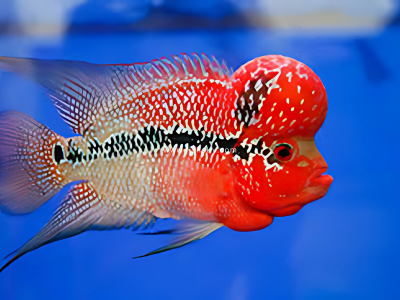
It All Starts with Genetics
Just like humans inherit traits from their parents, Flowerhorns get their features through genetics. If a Flowerhorn comes from a strong bloodline — where both the male and female had big koks — the offspring is more likely to develop a large hump.
What You Can Do:
• Buy your Flowerhorn from reputed breeders.
• Ask for pictures or videos of the parent fish.
• Choose a fish that already shows a rounded or bulging head when it’s young (usually 2–3 months old).
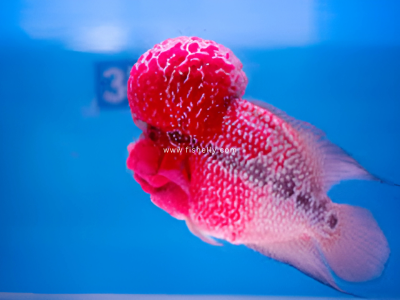
Note: No matter how much care you give, a Flowerhorn with poor genetics won’t develop a massive hump.
High-Protein Diet = Bigger Hump
The kok is made of fat and muscle tissues. To grow it bigger, your Flowerhorn needs a protein-rich diet. The right foods provide the nutrients needed to build body mass — including the hump.
Best Foods for Kok Growth:
• Flowerhorn Head-Enhancer Pellets: Special pellets that contain protein, spirulina, astaxanthin, and other growth boosters.
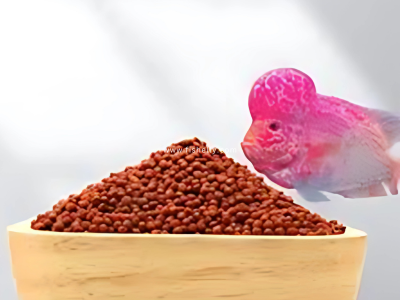
• Live/Frozen Foods: Bloodworms, shrimp, and mealworms provide excellent protein.
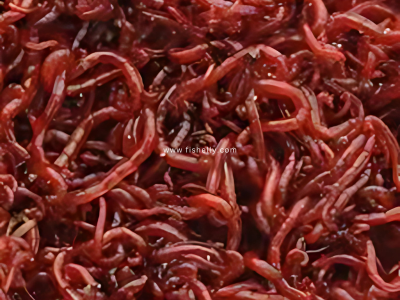
• Beef Heart Paste: A powerful growth food, but use in moderation (1–2 times a week).
• Vegetables (like peas and spinach): Help in digestion and balance.

Feeding Schedule:
• Feed 2 to 3 times daily.
• Don’t overfeed — it leads to bloating and poor water quality.
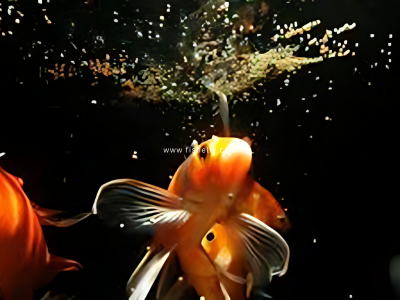
• Remove uneaten food after 5–10 minutes.
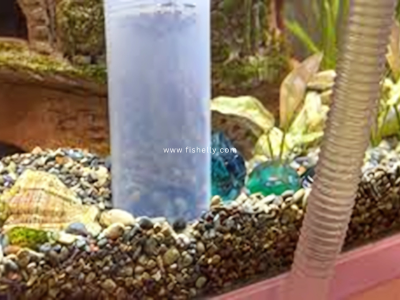
Tip: Combine dry and wet food to give a balanced diet.
Give Them a Spacious and Clean Tank
Your Flowerhorn needs enough space to swim, turn, and grow comfortably. A small or dirty tank can stress the fish and slow down kok development. Ideal Tank Setup:
• Minimum size: 55 gallons (larger is better).
• Filter: Strong external filter to keep water clean.
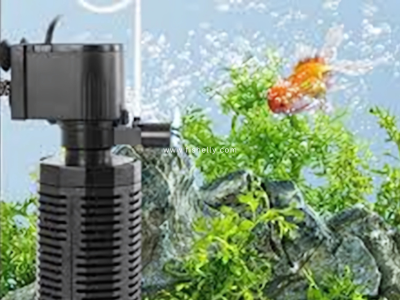
• Heater: Keep water warm between 28–30°C (82–86°F).
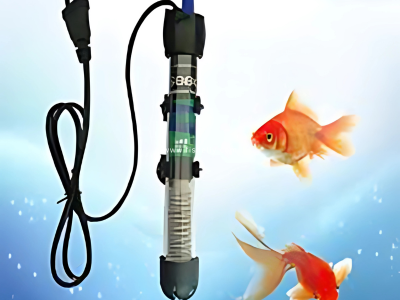
• No tank mates: Flowerhorns are aggressive and do best alone.
• Smooth decorations: Avoid sharp objects that can damage the head.
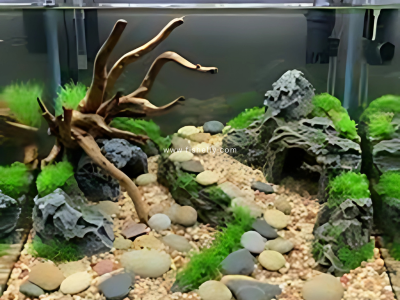
Water Maintenance:
• Change 25–30% water every week.

• Clean the tank glass and filter regularly.
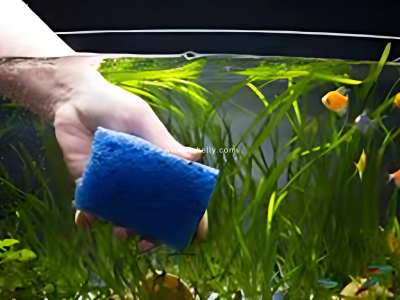
• Remove waste daily using a siphon.
Clean water = healthy kok growth.
Perfect Water Parameters Matter
Water quality is the heart of fish health. Bad water causes stress, sickness, and stunted kok growth.
Ideal Water Conditions:
| Parameter | Ideal Range |
| Temperature | 28–30°C (82–86°F) |
| pH Level | 7.4 to 8.0 |
| Ammonia | 0 ppm |
| Nitrite | 0 ppm |
| Nitrate | 20 ppm |
Use a water testing kit once a week and adjust parameters if needed. Add aquarium salt occasionally to reduce stress and improve healing.
Deworming Helps with Growth
Many fish, including Flowerhorns, may carry internal parasites that affect digestion, nutrient absorption, and metabolism.
Why Deworming Matters:
• Deworming improves digestion and boosts metabolism.
• A healthy metabolism helps the fish use nutrients more efficiently.
• This directly supports kok development and overall health.
How to Deworm Safely:
• Use fish-safe dewormers like Levamisole or Praziquantel (follow instructions).
• Deworm once every 2–3 months or as needed.
• Avoid feeding during deworming.
• Monitor fish for stress signs during treatment.
Interact With Your Flowerhorn
Did you know your Flowerhorn is intelligent and can recognize you? Regular interaction makes the fish more active and mentally stimulated — which helps with muscle and kok growth.
How to Interact:
• Move your finger along the glass; let the fish follow.

• Use a small mirror for short periods (5 minutes max) to make it flare up and exercise.
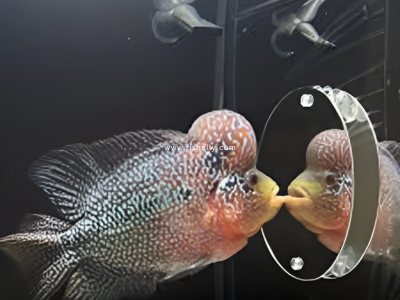
• Play light music near the tank (some owners swear it works!).
A mentally active fish = better physical growth.
Should You Use Kok Boosters or Supplements?
Some hobbyists use vitamin gels or special boosters designed to improve kok size. These are mixed with pellets or applied externally.
Important Notes:
• Use only products from trusted brands.
• Avoid any injections or steroids — these can harm your fish in the long term.
• Natural growth is safer and more lasting.
If you’re unsure, always choose natural feeding methods over artificial enhancers.
What to Avoid if You Want a Big Kok
• Overcrowded Tank: More fish = more waste = dirty water.
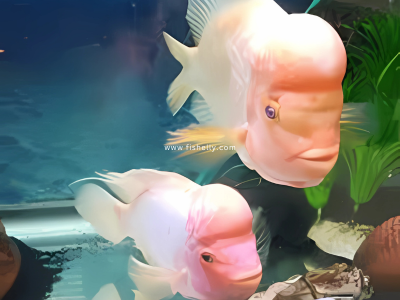
• Inconsistent Temperature: Sudden drops stress your fish.
• Cheap Food: Low-quality food lacks nutrients and may cause health problems.
• Neglect: Lack of care, dirty tank, or missed feeding leads to a weak fish with no kok.
Stress-Free Environment = Better Growth
Even with the best food and genetics, stress can slow or completely halt kok development. Common causes include loud noise, frequent tank movement, tapping on glass, or aggressive tank mates (if any are present).
What to Do:
• Place the tank in a calm, low-traffic area.
• Avoid frequent tank rearrangement.
• Cover the tank sides with background paper to reduce visual stress.
• Maintain a consistent light and dark cycle (e.g., use a timer).
Proper Lighting Enhances Both Kok and Color
Good lighting helps in developing not just the kok but also the vibrant colors Flowerhorns are famous for.
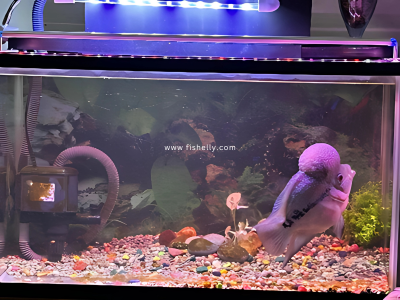
Best Practices:
• Use full-spectrum LED aquarium lights.
• Keep the lights on for 8–10 hours daily.
• Avoid too intense lighting, which may stress the fish.
Track Growth Progress
Monitoring growth regularly helps detect early signs of stunted kok development or illness.
Tips:
• Take monthly photos from the same angle.
• Maintain a care journal (e.g., diet, deworming dates, water tests).
• Note: behavioral changes — less movement may mean something is off
Seasonal Adjustments
Seasonal shifts (especially in India) may affect water temperature or cause power cuts.
How to Prepare:
• Use a backup battery-operated air pump.
• During winter, ensure heater settings are optimal.
• In summer, avoid direct sunlight on the tank.
Emergency Response Plan
If your Flowerhorn suddenly shows signs of stress, bloating, or kok shrinkage, quick action is key.
Emergency Steps:
• Immediately test water parameters.
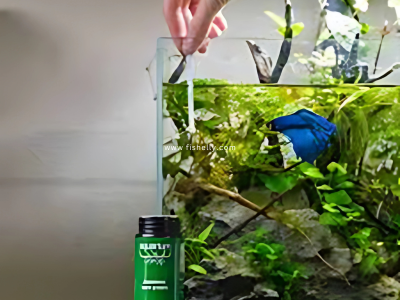
• Fast the fish for 24–48 hours if bloated.
• Add aquarium salt and increase aeration.
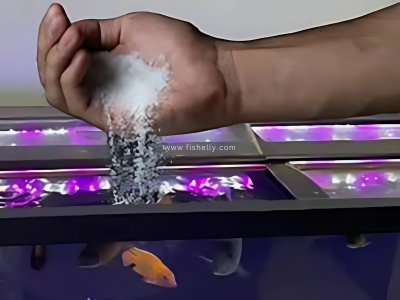
• Isolate the fish if injury or infection is suspected.
Bonus Tips
• Keep a tank light on for 8–10 hours a day — it helps show off colors and promotes health.
• Use mirror therapy carefully (not more than once a day).
• Track growth every month with pictures.
Faq
1. Why isn’t my Flowerhorn’s head growing?
Poor genetics, low protein diet, or bad tank conditions.
2. When does the kok start to grow?
From 2–3 months, major growth by 4–10 months.
3. What food helps the kok grow?
Pellets, bloodworms, shrimp, beef heart, and veggies.
4. Can I feed only pellets?
Yes, but mixing with live/frozen food is better.
5. How often should I feed my Flowerhorn?
2–3 times daily, in small portions.
6. Can I keep two Flowerhorns together?
No, they’re aggressive. Keep them alone.
7. What tank size is ideal?
At least 55 gallons for one Flowerhorn.
8. How often to clean the tank?
Weekly 25–30% water change + daily waste removal.
9. Can dirty water affect the hump?
Yes, it causes stress and stunts growth.
10. Do kok boosters work?
Some help, but avoid harmful chemicals or injections.
11. Can I use a mirror?
Yes, for 5 minutes a day to stimulate activity.
12. How long to grow a big kok?
3 to 6 months with proper care.
13. Should I keep the light on?
Yes, for 8–10 hours daily.
14. Does music help the fish grow?
It may calm and activate them — try gently.
15. What stops kok growth?
Small tank, poor food, dirty water, or neglect.
Conclusion
Growing an impressive kok on your Flowerhorn is a rewarding journey that requires patience, dedication, and the right approach. While genetics lay the foundation, it's your consistent care—through a protein-rich diet, a clean and spacious tank, perfect water parameters, and regular interaction—that truly brings out the best in your fish. Avoid shortcuts like harmful enhancers and focus instead on natural, proven methods. With time, you’ll witness your Flowerhorn transform into a vibrant, healthy, and majestic fish with a kok you can be proud of.
